If you are looking for an unconventional yet rewarding pet, you may want to consider a snake. Contrary to popular belief, why snakes are good pets, and they can provide numerous benefits to their owners. From their low maintenance needs to their calming presence, snakes can make a great addition to any household. In this article, we will explore why snakes make the perfect pet and what benefits you can expect if you choose one.
Benefits of Keeping Snakes as Pets
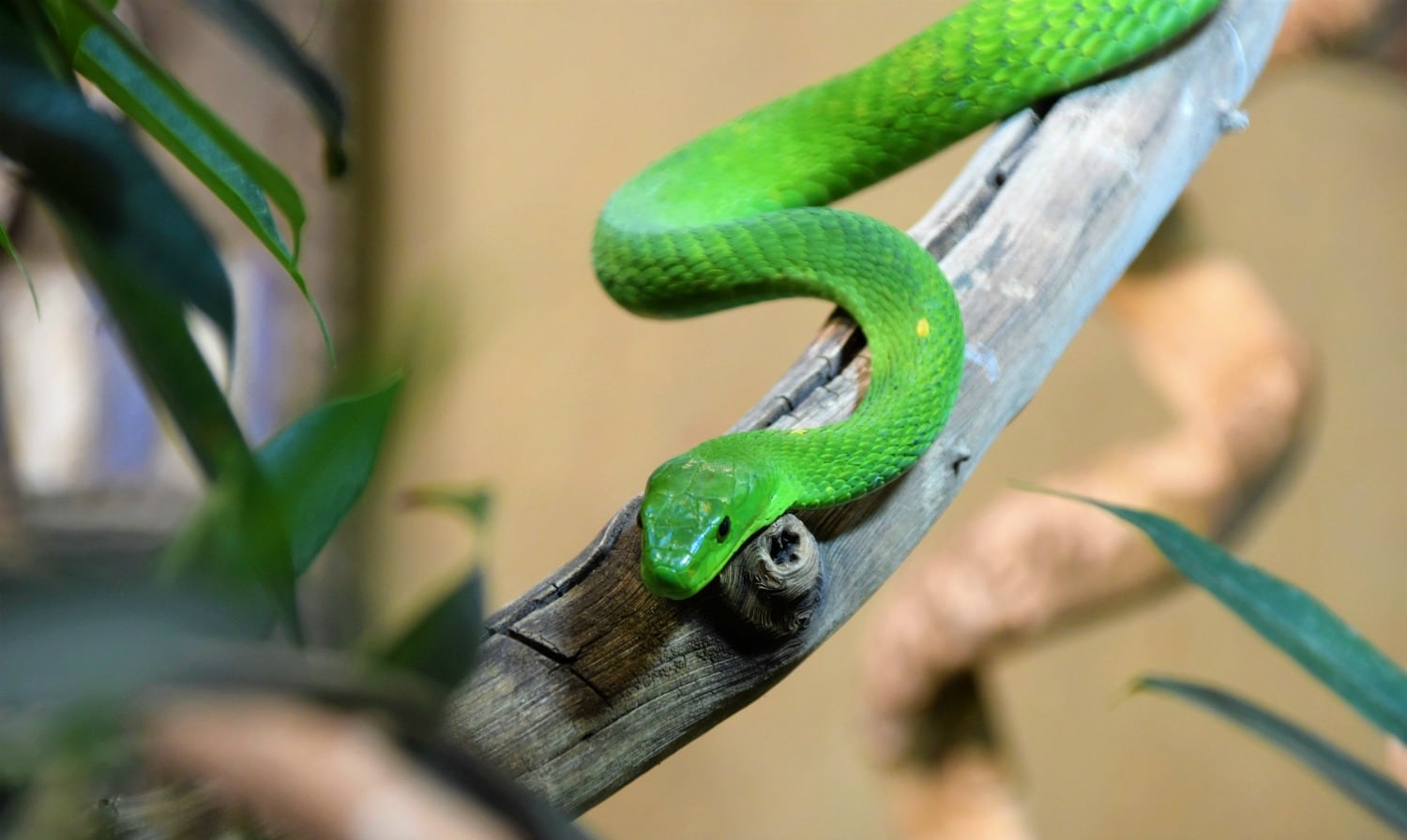
Low Maintenance
Snakes require very little maintenance and attention. Compared to other pets, they don’t need to be walked, groomed or taken to the vet. They are relatively easy to feed and can be left alone for longer periods of time.
Little Space Required
Snakes usually only need a small enclosure that can easily fit in a room. This makes them ideal pets for people living in small apartments or limited spaces.
Low Cost
Snakes are relatively inexpensive to purchase and maintain. The initial purchase cost, tank and equipment are relatively inexpensive compared to other pets.
Fascinating and Interesting
Snakes are fascinating creatures with unique behaviors and a range of colors and patterns. Watching them can be enjoyable and educational.
Natural Pest Control
Snakes can help control insects and rodents in the home. They can help to keep the environment free of pests.
Variety
There are many different types of snakes to choose from, from small garter snakes to large constrictors. This allows you to choose the type of snake that best suits your needs.
Housing
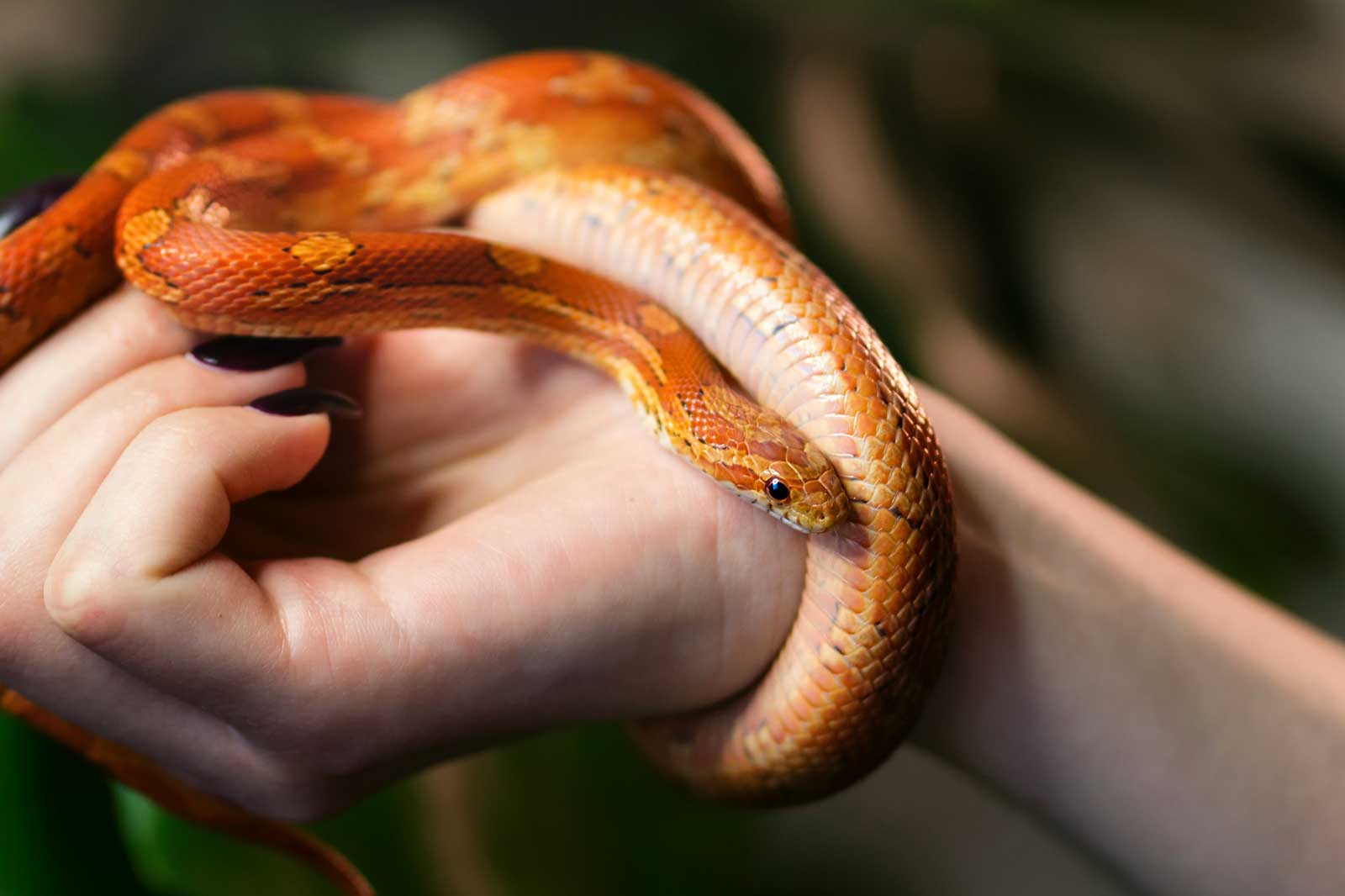
Snakes require a secure enclosure with appropriate temperature and humidity. A glass aquarium with a secure lid is the preferred housing for most pet snakes. Make sure the enclosure is large enough for your snake to move around and that it is escape-proof. Install a thermometer and hygrometer to monitor temperature and humidity. Provide a substrate, such as aspen shavings, orchid bark, or coconut fiber, and decorate the enclosure with branches, logs, rocks, and hides.
Temperature and Humidity
Most pet snakes require temperatures between 75-85°F in the day and 65-75°F at night. Heat can be provided with an under-tank heat pad or ceramic heat emitter. High humidity is important for some species, while others prefer a drier environment. Humidity should be monitored and misting the enclosure can help maintain a desirable humidity level.
2 Feeding
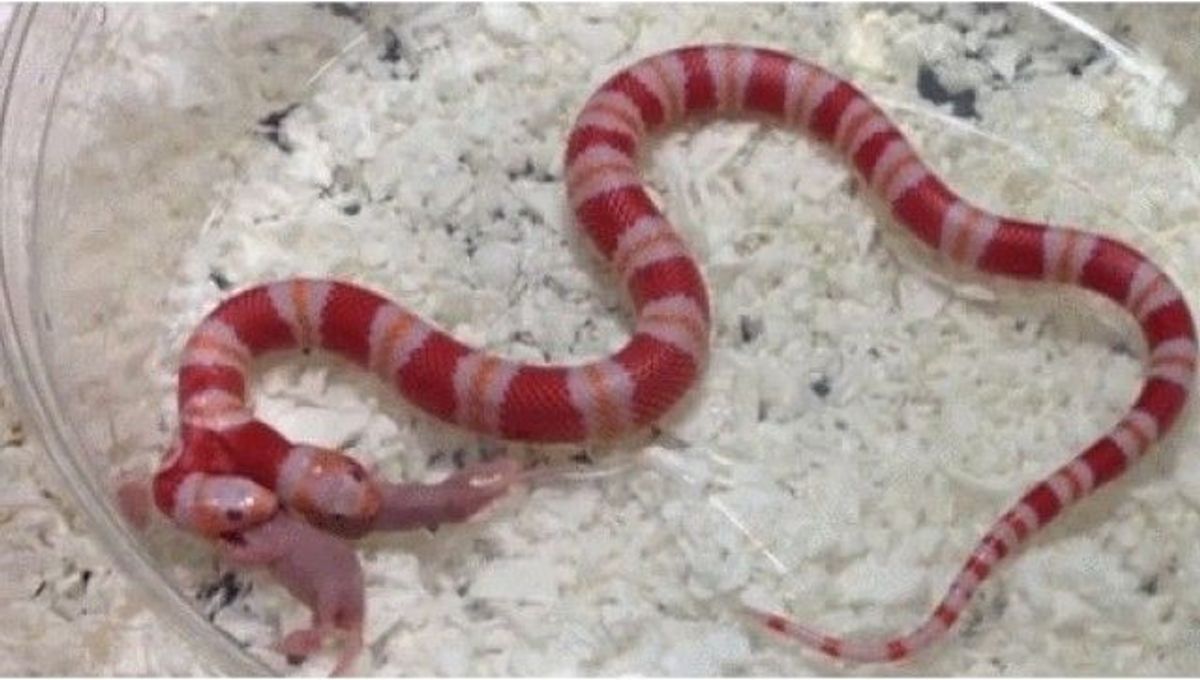
Snakes are typically not very demanding when it comes to their meals. They are content with eating rodents, such as mice or rats, and some snakes may even consume fish or eggs. Meals can be provided in the form of live, frozen, or pre-killed prey.
| Meal Type | Frequency |
|---|---|
| Live Prey | Weekly |
| Frozen Prey | Bi-weekly |
| Pre-killed Prey | Monthly |
Snakes should be fed in a designated area to reduce the risk of them being startled while they are eating. It is important to provide the right size of meal for the snake, as this can help to prevent the snake from choking.
3 Lighting and Temperature
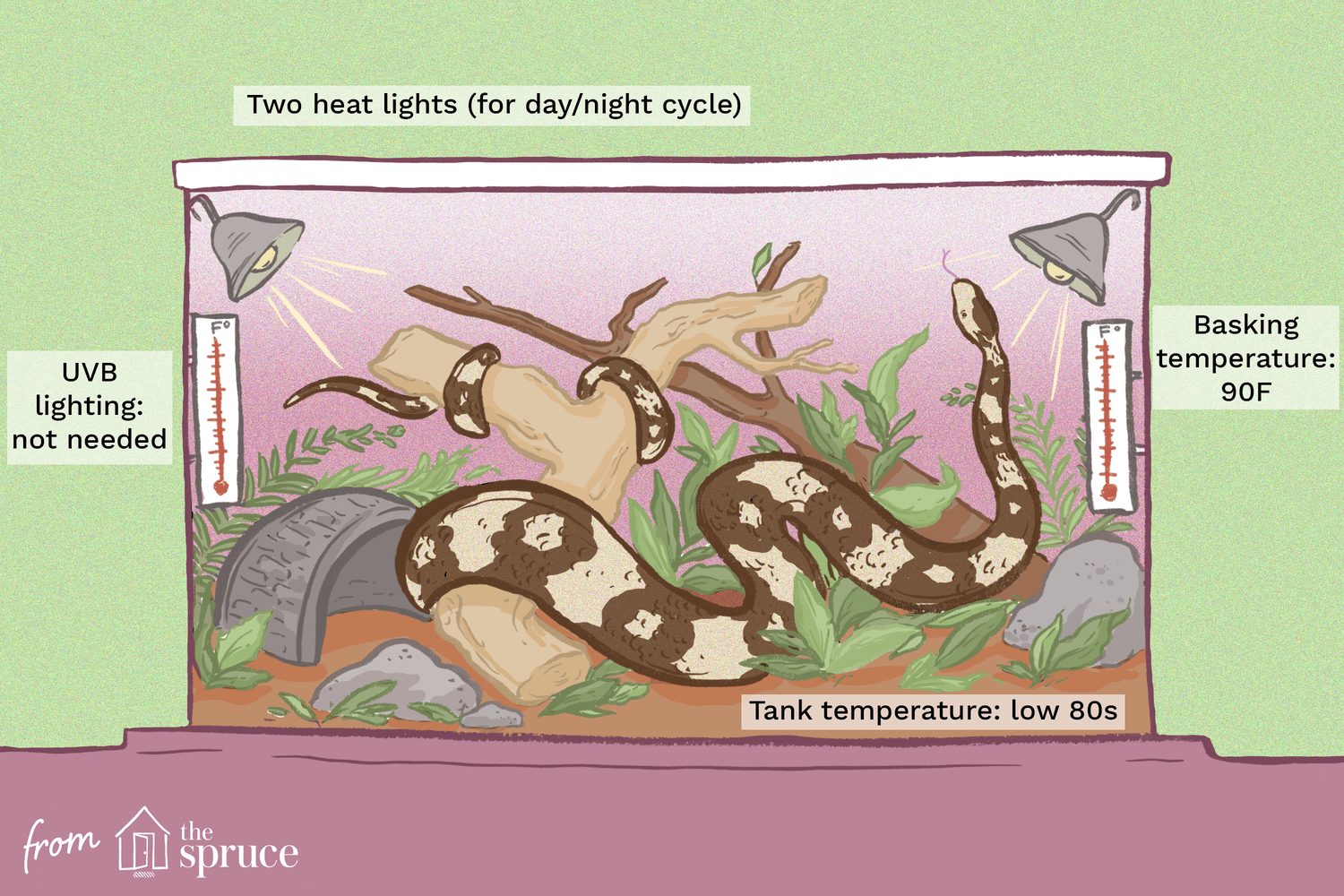
- Snakes need a specific temperature range to maintain their health and digestion. A temperature gradient should be maintained in the enclosure, providing both a warm and cool area.
- Lighting can also be provided in the enclosure, to mimic their natural environment and provide the snake with a day-night cycle. UVA and UVB lights are available for this purpose.
- In addition to this, a ceramic heat source should be used to provide a basking spot for the snake. This can be a bulb or a heat pad, depending on the type of enclosure.
4 Handling

Snakes require very minimal handling, and it is actually recommended that you do not handle your snake too often. Handling a snake can cause stress and discomfort, so it is important to only do it when necessary. If you do handle your snake, make sure you support their entire body and do not grab it too tightly. Additionally, if you have multiple snakes, it is important to not handle them all at the same time, as this can cause further stress. Handling should also be done with clean hands and you should be sure to wash your hands before and after handling the snake.
Common Species Kept as Pets
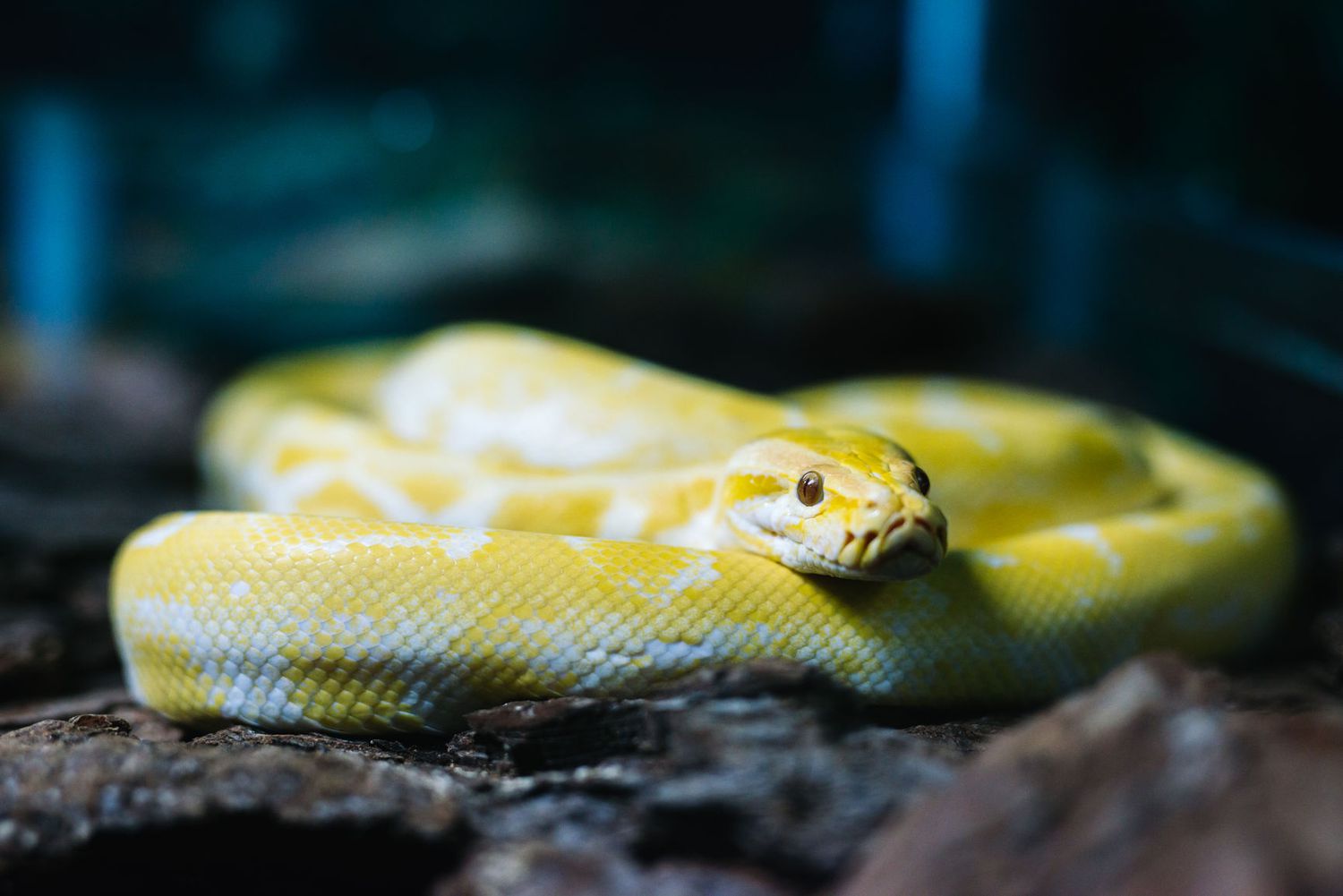
- Ball pythons
- Corn snakes
- Garter snakes
- King snakes
- Reticulated pythons
- Royal pythons
- Boas
- Rosy boas
- Desert kingsnakes
- Milk snakes
Snakes are some of the most commonly kept exotic pets. Ball pythons, corn snakes, garter snakes, king snakes, reticulated pythons, royal pythons, boas, rosy boas, desert kingsnakes, and milk snakes are all popular pet snake species. They come in a variety of sizes, colors, and patterns, making them a great choice for those who want something unusual and unique.
1 Corn Snakes
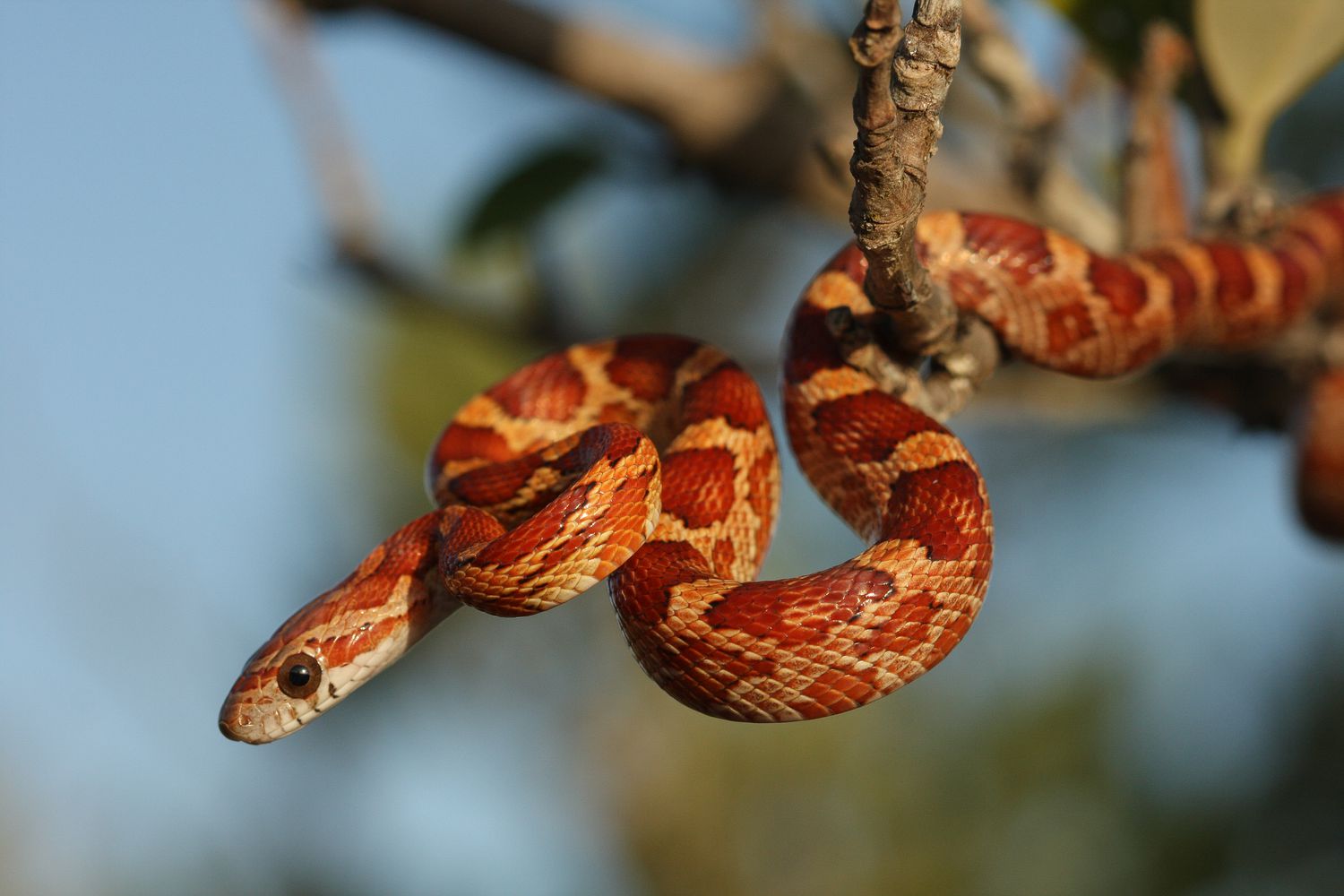
| Characteristic | Description |
|---|---|
| Size | Average adults range from 2-3 feet. |
| Temperament | Generally docile and tame, making them ideal for handling. |
| Habitat | Can thrive in a variety of terrariums. |
| Care Level | Easy to care for, suitable for beginner snake owners. |
| Lifespan | 12-15 years on average. |
Corn snakes are a popular pet snake due to their small size, docile temperament, and ease of care. They are a species of rat snake, native to the southeastern United States. They typically range from 2-3 feet in length as adults, and can live up to 12-15 years with proper care. They are typically a bit more active during the day, which makes them easier to spot in the home. They can thrive in a variety of terrariums, making them a great pet for beginner snake owners. Additionally, their docile nature makes them ideal for handling.
2 Kingsnakes
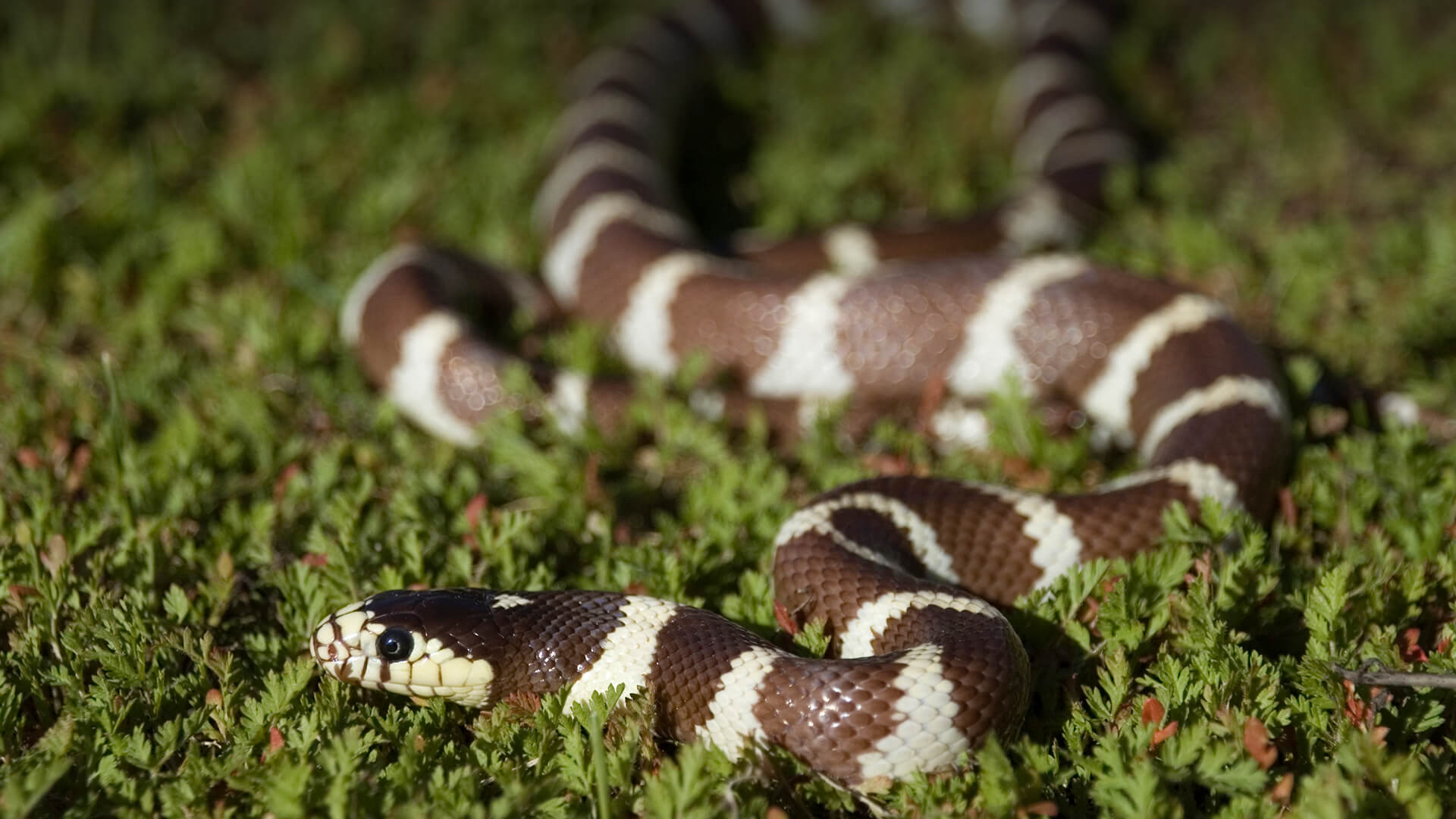
| Features | 2 Kingsnakes |
|---|---|
| Size | 3-4 feet |
| Lifespan | 15-20 years |
| Activity level | Moderate |
| Temperature | 80-85°F |
| Habitat | Arid and semi-arid |
| Feeding | Mice and insects |
2 Kingsnakes belong to the genus Lampropeltis, which are native to North and Central America. They are a popular pet snake due to their small size, moderate activity level, and long lifespan. They require a warm habitat with temperatures between 80-85°F, and they can live in both arid and semi-arid environments. In the wild, they feed on small mammals such as mice and insects. In captivity, they can be fed pre-killed mice or insects. They are easy to care for, and make good pets for beginner snake owners.
3 Milk Snakes
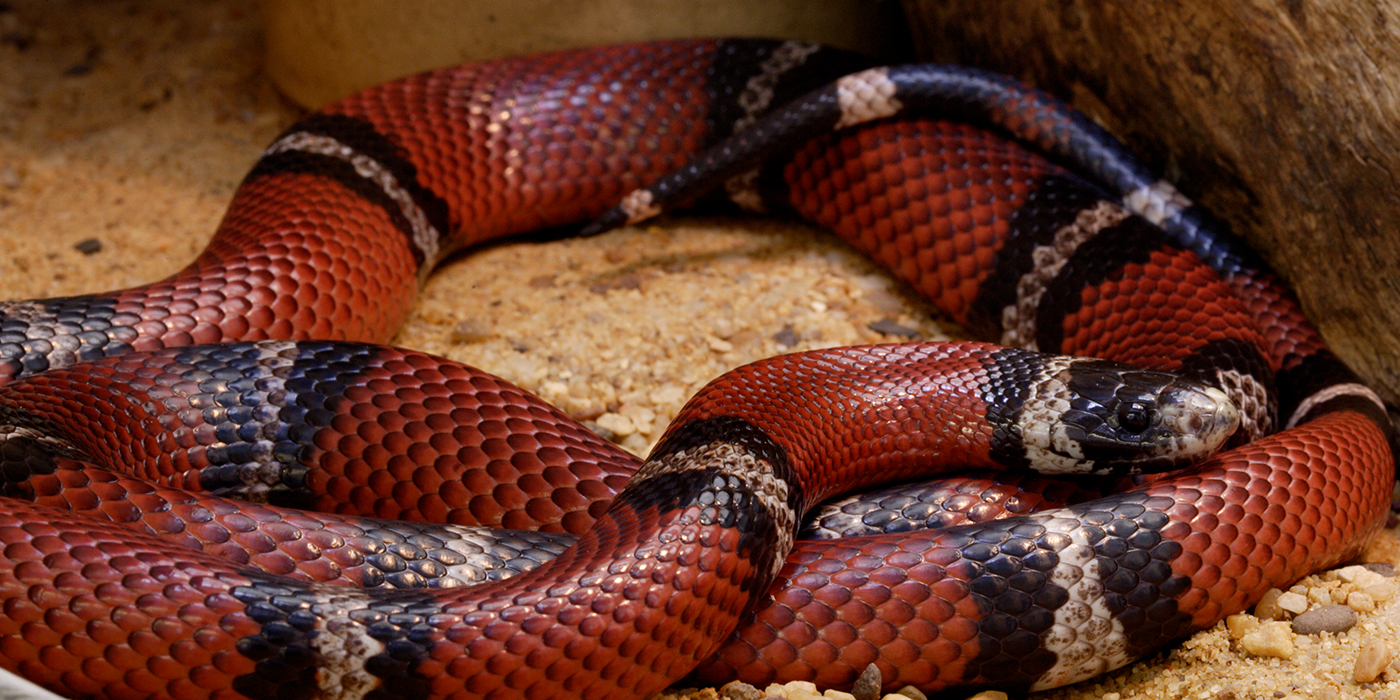
- Milk snakes are an excellent choice for a pet snake due to their manageable size, docile nature and vibrant coloration.
- These snakes typically grow up to 4 feet in length, making them a good size for a pet and perfect for an enclosure of 20 gallons or larger.
- Milk snakes are also quite easy to take care of, requiring a regular feeding schedule, suitable temperature and humidity, and an occasional spot cleaning of the enclosure.
4 Garter Snakes
| Name | Size | Habitat | Taming |
|---|---|---|---|
| Common Garter Snake | 2-3 feet | Forests, meadows, grasslands, ponds, lakes | Easy to tame |
| Western Terrestrial Garter Snake | 2-3 feet | Open grasslands, meadows, marshes, dry hillsides | Easy to tame |
| Texas Garter Snake | 2-3 feet | Open grasslands, meadows, marshes, dry hillsides | Easy to tame |
| Red-sided Garter Snake | 2-3 feet | Grasslands, marshes, woodlands, swamps, ponds | Easy to tame |
The four garter snakes that make good pets are the Common Garter Snake, Western Terrestrial Garter Snake, Texas Garter Snake and Red-sided Garter Snake. These snakes typically range in size from 2-3 feet in length. Common Garter Snakes are found in forest and meadow habitats, while Western Terrestrial and Texas Garter Snakes inhabit open grasslands, meadows and marshes. The Red-sided Garter Snake is found in grasslands, marshes, woodlands, swamps, and around ponds. All four species are known for being relatively easy to tame and make good pets for people who are looking for a low-maintenance pet.
5 Rat Snakes
- They are easy to handle, and can make good pets for children and adults alike.
- They require minimal space and equipment, and can live in a small enclosure.
- They are quite docile and rarely bite, so they are suitable for beginners.
- They are a good choice for those who want to breed snakes, as they lay large clutches of eggs.
- They are generally very hardy, and can live for up to 15 years.
Frequently Asked Questions
What are the benefits of owning a snake?
Snakes are relatively low maintenance pets, as they require minimal effort and resources to care for. They also don’t need daily walks or playtime, and they come in a variety of sizes so they can be adapted to different living spaces. Snakes are also great for people who don’t want a noisy pet, as they are quiet and do not require much attention. Snakes are also a great way to learn about wildlife and biology, as they can teach us about their natural habitats and how to care for them properly. Lastly, snakes can be a great conversation starter and can help break the ice in social situations.
How can owning a snake be enjoyable?
Snakes are low-maintenance pets and require minimal space, making them an ideal choice for first-time pet owners. They are fascinating to observe and can make great companions. They can help reduce stress and anxiety levels, and can be a great conversation starter. Watching them explore their enclosure can be very calming and soothing. Snakes can also be trained to recognize their owners and respond to them. Having a snake can also be a great learning opportunity, as they require research and knowledge in order to properly care for them.
What Attracts People to Having a Snake as a Pet?
Snakes are low-maintenance pets that require minimal space and have a relatively long lifespan compared to other pets. They don’t require daily walks and can be easily handled. Snakes can also be fascinating to watch and many people enjoy learning more about them. Furthermore, their unique physical characteristics, such as their shedding skins and their ability to swim, make them an interesting pet.
What makes snakes good pets?
Snakes are relatively low-maintenance pets, requiring minimal space and food. In addition, they have a long lifespan and can be handled with care. Unlike other animals, they also do not require walking or frequent playtime. Snakes are generally quiet and docile, making them ideal for those seeking a peaceful pet. As long as their environment and diet are well-maintained, snakes can be long-lived and loyal companions.
What kind of care and attention do snakes need?
Snakes require a warm habitat and a diet of appropriately sized and nutritious prey items. They should be kept in an enclosure that is cleaned regularly, and the temperature should be monitored to ensure it stays within the range that is suitable for their species. It is also important to provide a hiding spot and other items to help them feel secure in their environment. Snakes should also be handled carefully and gently to prevent stress.
Conclusion
Snakes make great pets for those looking for an unusual pet with minimal care requirements. They are low maintenance and can provide years of enjoyment for their owners. They are also a great way to teach children about responsibility and respect for animals, and can even be a conversation starter for visitors. With the right setup and care, snakes can make a great addition to any home.






